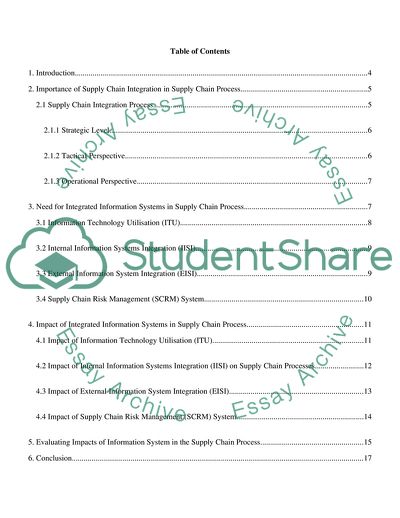Cite this document
(Successful Supply Chain Processes Require a High Degree of Supply Chain Integration Supported by the Integrated Information Systems Assignment Example | Topics and Well Written Essays - 3500 words, n.d.)
Successful Supply Chain Processes Require a High Degree of Supply Chain Integration Supported by the Integrated Information Systems Assignment Example | Topics and Well Written Essays - 3500 words. https://studentshare.org/information-technology/1834480-successful-supply-chain-processes-require-a-high-degree-of-supply-chain-integration-supported-by-the-integrated-information-systems
Successful Supply Chain Processes Require a High Degree of Supply Chain Integration Supported by the Integrated Information Systems Assignment Example | Topics and Well Written Essays - 3500 words. https://studentshare.org/information-technology/1834480-successful-supply-chain-processes-require-a-high-degree-of-supply-chain-integration-supported-by-the-integrated-information-systems
(Successful Supply Chain Processes Require a High Degree of Supply Chain Integration Supported by the Integrated Information Systems Assignment Example | Topics and Well Written Essays - 3500 Words)
Successful Supply Chain Processes Require a High Degree of Supply Chain Integration Supported by the Integrated Information Systems Assignment Example | Topics and Well Written Essays - 3500 Words. https://studentshare.org/information-technology/1834480-successful-supply-chain-processes-require-a-high-degree-of-supply-chain-integration-supported-by-the-integrated-information-systems.
Successful Supply Chain Processes Require a High Degree of Supply Chain Integration Supported by the Integrated Information Systems Assignment Example | Topics and Well Written Essays - 3500 Words. https://studentshare.org/information-technology/1834480-successful-supply-chain-processes-require-a-high-degree-of-supply-chain-integration-supported-by-the-integrated-information-systems.
“Successful Supply Chain Processes Require a High Degree of Supply Chain Integration Supported by the Integrated Information Systems Assignment Example | Topics and Well Written Essays - 3500 Words”. https://studentshare.org/information-technology/1834480-successful-supply-chain-processes-require-a-high-degree-of-supply-chain-integration-supported-by-the-integrated-information-systems.


